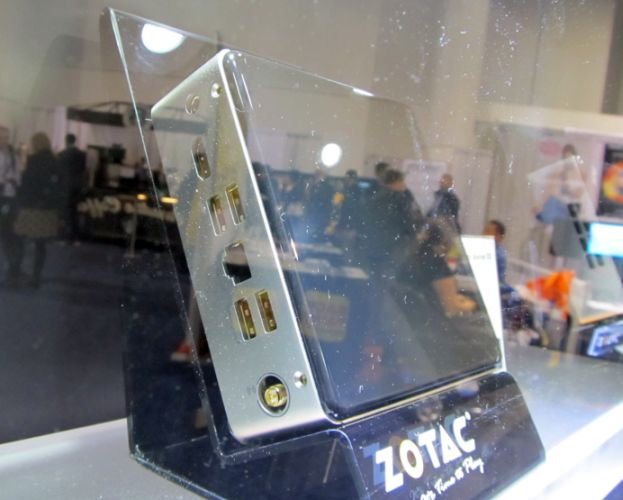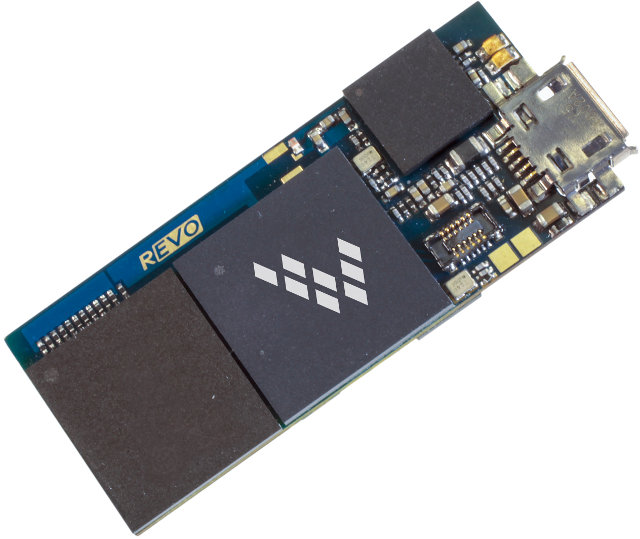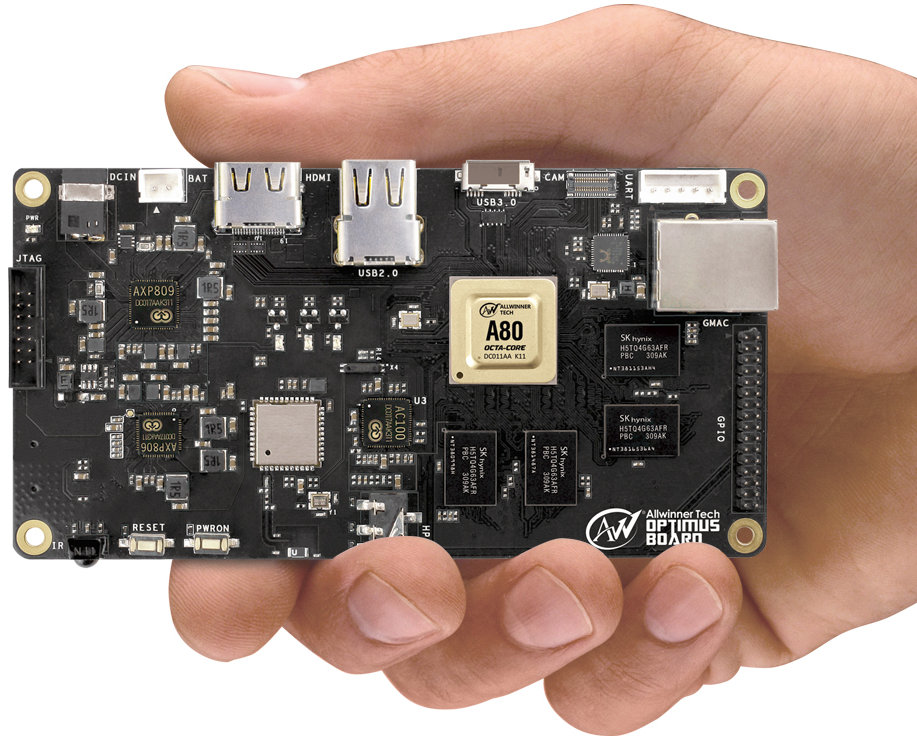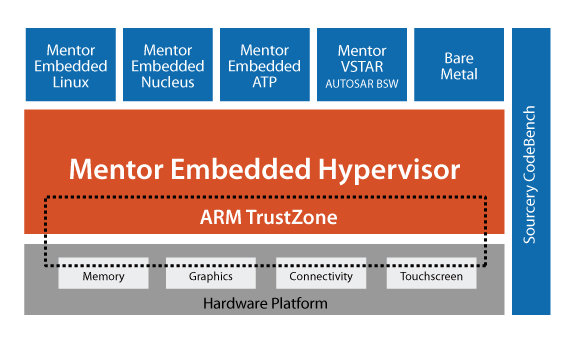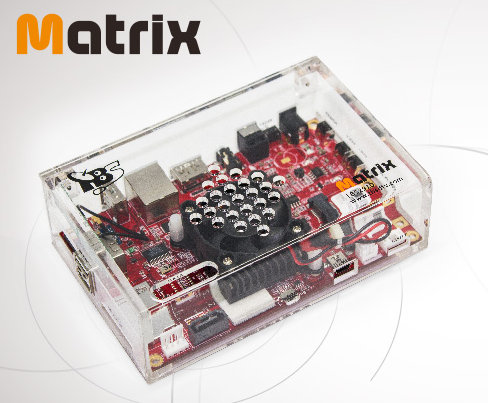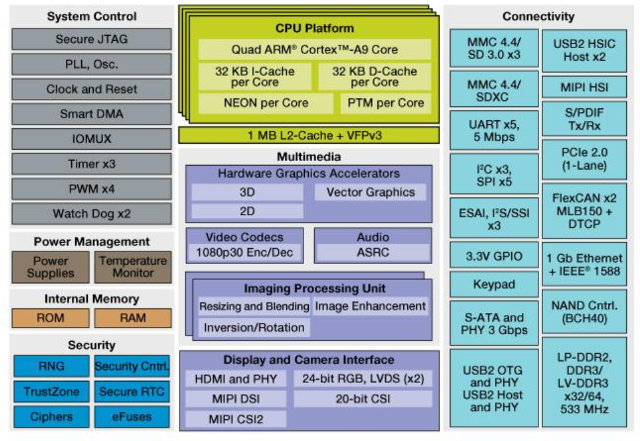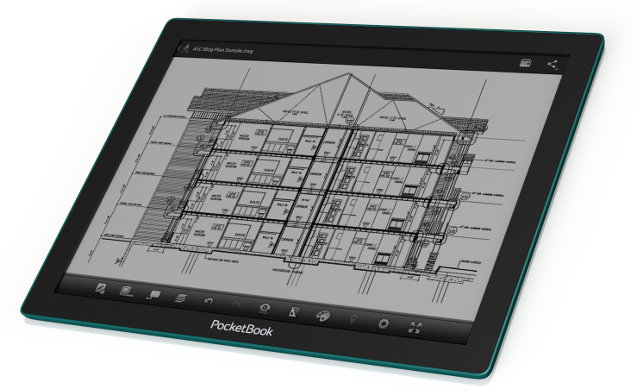ZOTAC, a company known to provide small x86 Linux PCs, is currently showcasing an ARM based version at CES 2014, part of their ZBOX nano series, running either Ubuntu 12.04 or Android 4.2 on a Freescale i.MX 6Quad processor. ZOTAC ZBox nano “ARM” specifications: SoC – Freescale i.MX 6Q quad core Cortex A9 @ 1 Ghz with Vivante GC2000 GPU System Memory – 1GB DDR3 Storage – 8GB eMMC flash, SATA 3Gb/s interface with 2.5″ HDD support, and SD card slot (SD/SDHC/MMC) Video Output – HDMI 1.4 USB – 4x USB 2.0 host port Connectivity – GbE Ethernet, and Wi-Fi 802.11 b/g/n via mini PCIe module. The computer currently runs Android 4.0.4 and Ubuntu 12.04 LTS, but Android 4.0.4 will be upgraded to Android 4.2. ZBOX nano “ARM” mini PC will be available in Q2 2014 for a price between $100 and $150. Via Liliputing Jean-Luc Aufranc (CNXSoft)Jean-Luc started CNX […]
Freescale Announces WaRP (Wearables Reference Platform) Powered by Freescale i.MX 6SoloLite
We’ve seen more and more wearable products recently, be it smartwaches, smart rings, fitness bands, etc.., and we can expect several announcements at CES 2014 for wearables. Freescale has just launched their Wearable Reference Platform (WaRP), comprised of the WaRPboard, a tiny board based on Freescale i.MX 6SoloLite running Android, and a daughter board with KL16 Cortex M0+ MCU and several sensors. The main chips and corresponding features on the board are as follows: Freescale i.MX 6SoloLite Cortex A9 processor @ 1GHz with 2D graphics Vivante GC355 and GC320 GPUs. KL16 Sub-Family General Purpose Cortex M0+ MCU. Xtrinsic FXOS8700CQ, 6-Axis Sensor with Integrated Linear Accelerometer and Magnetometer. Xtrinsic MMA955xL Intelligent Motion-Sensing Platform. It cane be programmed to provide freefall detection, tilt and 3-D orientation detection, tap and double tap detection, dead reckoning, shock, vibration and sudden motion detection and power management. The company expect WaRP to be used in devices such as […]
What to Expect from AllWinner, Rockchip, Mediatek, and Other Silicon Vendors at CES 2014
CES 2014 is coming soon, and it will take place on 7 – 10 January, 2014, and we can expect some interesting SoC news. Samsung suggested they will unveil their 64-bit ARM SoC (Exynos 6?) at CES 2014, Nvidia will hold a press conference to “showcase new NVIDIA Tegra mobile technologies, gaming innovations, and advanced automotive display technologies”, and Qualcomm has been quiet for now. However, several Chinese SoC vendors, namely AllWinner, Rockchip, and Mediatek, have already announced what they will showcase at CES 2014, albeit with few details. AllWinner at CES 2014 Allwinner announced will showcase their OptimusBoard based on their Ultra Octa-Core A80 SoC, as well as 4G tablets powered by Allwinner A31/A31s, and dual-SIM phablets sporting A23 dual-core. Allwinner A80 is an Octacore processor featuring four ARM Cortex A7 cores, and four Cortex A15 cores @ 2.0GHz together with an unnamed GPU offering 2x more performance over previous […]
Mentor Embedded ARM Hypervisor Automotive Demo on Freescale i.MX6 Board
Virtual machines are usually run on server or desktop PC to run several operating systems simultaneous. About 2 years ago, I wrote about an embedded hypervisor running Linux and Android on the Pandaboard develompent board, with the goal of separating home and enterprise operating systems in mobile devices so that enterprise data is safe. Since then, virtualization extensions are now part of ARM Cortex A15 / A7, and as well as the new Cortex A53 / A57 ARMv8 64-bit cores, but in my mind at least, those where mostly designed to address the server market. It turns out hypervisors are also useful in the automotive field, where for example, the dashboard and In-vehicle infotainment (IVI) systems runs in two separate virtual machines controlling two different displays from one processor. Mentor Embedded showcased such automotive system at ARM Techcon 2013, where they showed a Freescale i.MX6 quad core board, which looks […]
Fedora 20 “Heisenbug” Release Makes ARM a Primary Architecture
Fedora has been supporting ARM architecture for a while now, but it was only as a secondary architecture without official support. With the recent Fedora 20 release, nicknamed “Heisenbug”, the ARM architecture, more exactly ARMv7 hard float and greater, is promoted to a primary architecture meaning ARMv7 will have the same status as x86 and x86_64 architectures with packages officially build and supported by the Fedora community. What it does not mean however, due to the nature of ARM architecture, is that you can simply download an ISO to install on any ARM platforms, like you would do on an Intel or AMD computer. It’s a little more complicated than that, as it is platform specific, but instructions are available for the Beaglebone Black, Compulab Trimslice, the Wandboard, Calxeda Energycore Midway and Highbank, and Versatile Express in QEMU. You can download images with MATE, KDE, XFCE, LXDE, SOAS desktops, as […]
TBS Matrix ARM mini PC Features Freescale i.MX6Q, Supports USB DVB Tuners
TBS, a producer of digital TV tuners for PC, has decided to launch their own ARM mini PC called Matrix to interface with their USB DVB tuners. The board is based on Freescale i.MX6 Quad ARM Cortex A9 SoC with 2GB RAM, 16GB eMMC flash, and costs about $150. The company also claims to have XBMC, VDR, Tvheadend software running on the platform. Here are the specifications for this quad core ARM board / computer (Codename: TBS2910): SoC – Freescale i.MX6 Quad (MCIMX6Q5EYM10AC) quad core ARM Cortex A9 processor @ 1.0 GHz with Vivante GC2000 3D GPU System Memory – 2GB DDR Storage – 16GB eMMC, SD card slot, micro SD card slot, and SATA interface USB – 3x USB 2.0 host ports, 1x USB OTG Video Output – HDMI Audio Output – HDMI and 3.5mm audio jack Connectivity – 10/100/1000M Ethernet, and Wi-Fi 802.11n/b/g Expansion – 16-pin header for […]
Most Embedded GPUs Do NOT Support Hardware Video Decoding Acceleration. The VPU Does.
Many people seem to get confused with the actual function of GPUs used in embedded (ARM / MIPS) SoC, and I can often read comments similar to “with lima drivers we should get video decoding in XBMc soon”, and I’ve just received any email reading “My main task is to build a full hd media player based on ffmpeg with hardware decoding acceleration for Linux. Is it possible with mali400mp4?”. So I’ve decided to write a short post about it to make things a bit more clear. Contrary to GPUs in the PC world, embedded GPUs only take care of 3D, and sometimes 2D graphics, and leave video encoding and/or decoding to another block called Video Processing Unit (VPU). There’s at least one exception with Broadcom Videocore IV GPU as found in the processor used in the Raspberry Pi that apparently takes care of 2D & 3D graphics as well […]
13.3″ PocketBook CAD Reader Features a Lighter, Thinner E-Ink Fina Display
E-Ink has announced its new E-Ink Fina, a new thin and lightweight electronic paper display (EPD) technology, has been embedded into PocketBook CAD Reader, the first Fina ePaper Android device designed specifically for displaying drawings generated with Autocad from Autodesk. PocketBook CAD Reader integrates a 1GHz dual-core CPU (probably Freescale i.MX6 DualLite) running Android 4.0.4 with 2 GB of RAM and 16 GB of storage allowing it to hold plans for up to 200 constructions projects. The product also comes with built-in Wi-Fi & 3G modules, and a 8000 mAh battery. The built-in touch screen and Wacom digitizer support both touch and a stylus for fine detail work. But that’s the display that make it stand out. E-Ink claims that Fina displays weigh less than 50% of the weight of an equivalent glass based TFT and are less than 50% of the thickness, and the 13.3″ display module installed in […]


